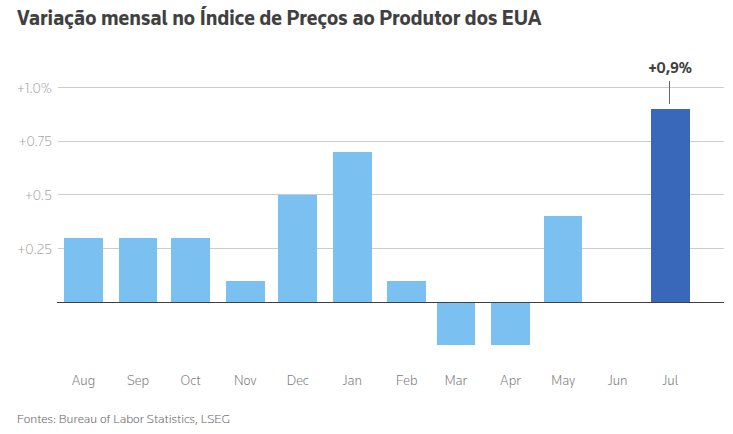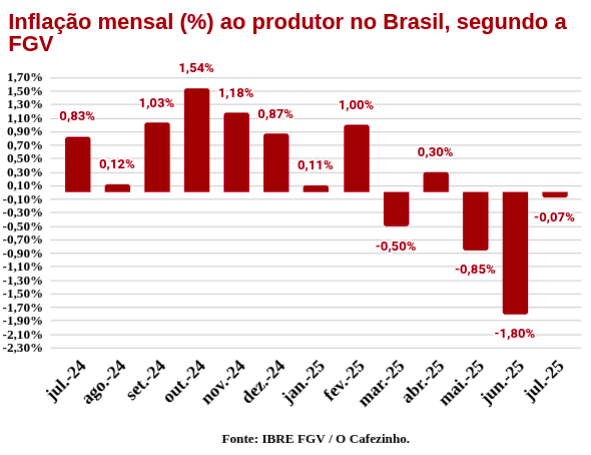
July prices paid by American industry are the highest in 3 years.
Donald Trump’s new tariff regime is already causing prices to skyrocket in the United States. Data from the country’s Department of Labor, released this Thursday, shows that producer inflation (PPI) jumped 0.9% in July, the largest increase in the period. While the tariff policy is starting to take its toll at home, a curious economic irony is unfolding in Brazil.

Despite speculation that Trump’s “tariff blitz” may have helped contain inflation in Brazil, it’s much more likely that the calm in prices here has entirely domestic reasons. There are two main factors for this.
The first may be the sharp interest rate hike driven by the Central Bank, which keeps the Selic rate at 15% per year, one of the highest levels in several years, discouraging consumption and cooling down the economy. We use the expression “may be” here because many economists don’t believe in such a direct correlation between basic interest rates and inflation.
Above all, the main driver is the bumper agricultural crop in Brazil, in addition to the increase in animal slaughter.
Recently released data from the IBGE, also this Thursday (14), points to a record harvest of 340.5 million tons in 2025, a 16.3% jump from the previous year.
The slaughter of cattle, pigs, and chickens, as well as the production of eggs and milk, has also been seeing very significant increases in recent months in Brazil.

To understand what’s at stake, you just need to know that producer inflation is a thermometer that foreshadows the fever. It measures industry costs for raw materials and inputs. When these costs rise, the increase is passed on to products on the shelves a few weeks later. This rule holds true worldwide. That’s why the July results show that the U.S. and Brazil are following opposite paths.
In the U.S., the official report shows a general rise. Prices for goods rose 0.7% and for services, 1.1% in July. The culprits are precisely the products affected by surcharges, such as steel and aluminum, in addition to a nearly 40% spike in vegetables. Economists are already warning that it’s only a matter of time before this increase hits consumers hard, which could force the American central bank to rethink an expected interest rate cut.
Meanwhile, in Brazil, the General Price Index – Domestic Availability (IGP-DI) told an opposite story, with a slight drop of 0.07% in July. Its main component, which measures producer prices, fell 0.34%, driven by the cheapening of important raw materials like iron ore and soybeans. Interestingly, even the rise in construction costs was influenced by PVC products, which became more expensive due to import tariffs on resins, showing how global trade has complex effects.
This is where the speculation about the “tariff blitz” comes back into play. With the Brazilian crop hitting records, it’s possible that Trump’s policy is creating a “dam effect.” Products that would normally be exported to the United States, like meat and grains, may be held back or redirected to the domestic market in the face of the new barriers. With more products available in Brazil, the tendency is for prices to fall, benefiting both the industry and the consumer.
In the end, July 2025 painted two very distinct economic scenarios. On one side, a government that bets on tariffs and sees inflation skyrocket as a consequence. On the other, a country that reaps the benefits of a record production, but that, perhaps, is receiving unexpected help precisely from the same country that decided to attack it with irrational tariffs.










